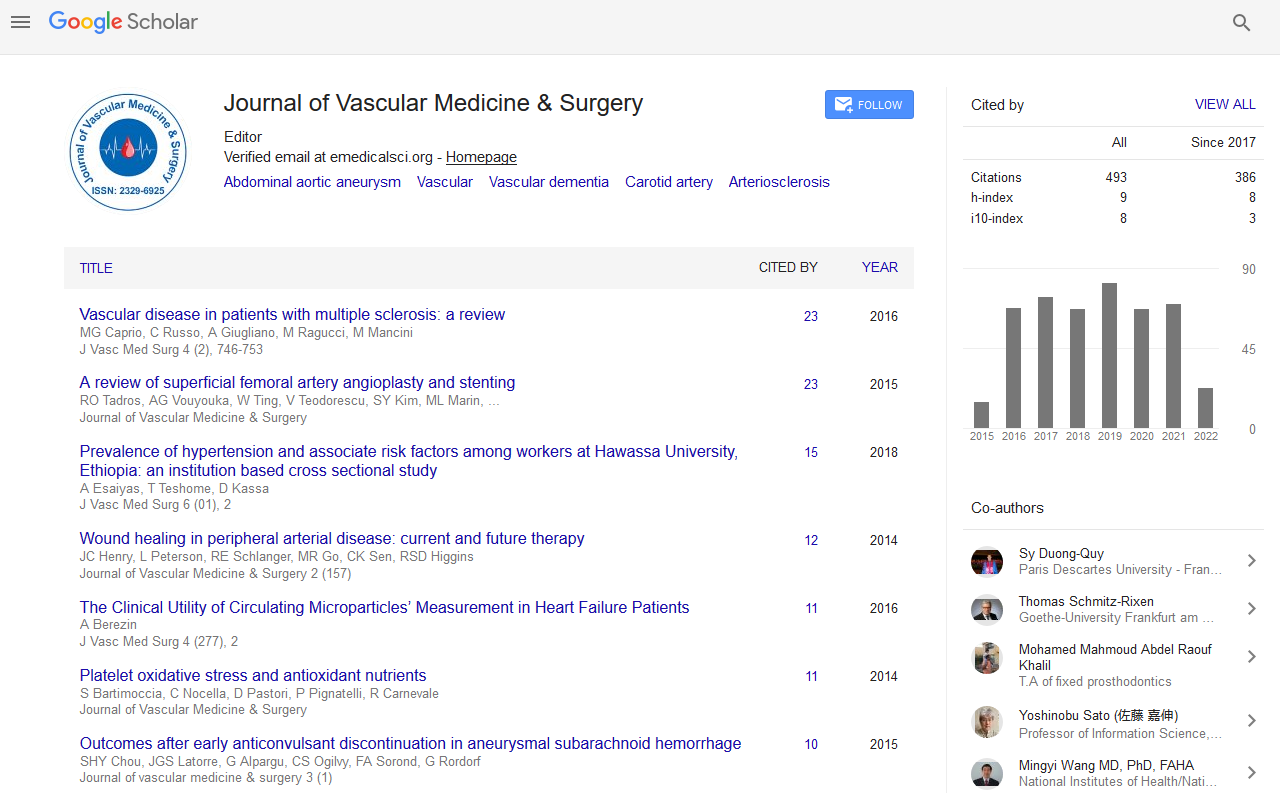Indexed In
- Open J Gate
- Academic Keys
- RefSeek
- Hamdard University
- EBSCO A-Z
- OCLC- WorldCat
- Publons
- Euro Pub
- Google Scholar
Useful Links
Share This Page
Journal Flyer

Open Access Journals
- Agri and Aquaculture
- Biochemistry
- Bioinformatics & Systems Biology
- Business & Management
- Chemistry
- Clinical Sciences
- Engineering
- Food & Nutrition
- General Science
- Genetics & Molecular Biology
- Immunology & Microbiology
- Medical Sciences
- Neuroscience & Psychology
- Nursing & Health Care
- Pharmaceutical Sciences
Abstract
Imaging of Peripheral Vascular Malformations: Imaging Modalities Mini Review
Natalia K Majewska, Piotr Stajgis, Mateusz Wykrętowicz, Marek Stajgis, Grzegorz Oszkinis and Katarzyna Katulska
Currently the major aim in peripheral vascular malformation (PVM) diagnosis, crucial for subsequent management and treatment, is to identify its hemodynamic characteristics. Other significant features that should be specified by a radiologist is the exact location of the anomaly, its size and morphology. Until recently the diagnostic methods available for comprehensive evaluation of malformations have been rather limited. Moreover, they were often associated with the necessity of exposing the patient to X-ray radiation and with invasive procedures, as for example in angiography. The development of imaging techniques used in the diagnosis of vascular abnormalities in recent years, especially magnetic resonance imaging (MRI), has largely contributed to improved diagnostic value of the tests. In this article we review the currently available imaging modalities with particular consideration of magnetic resonance imaging and its capability to distinguish between high-flow and low-flow malformations.


